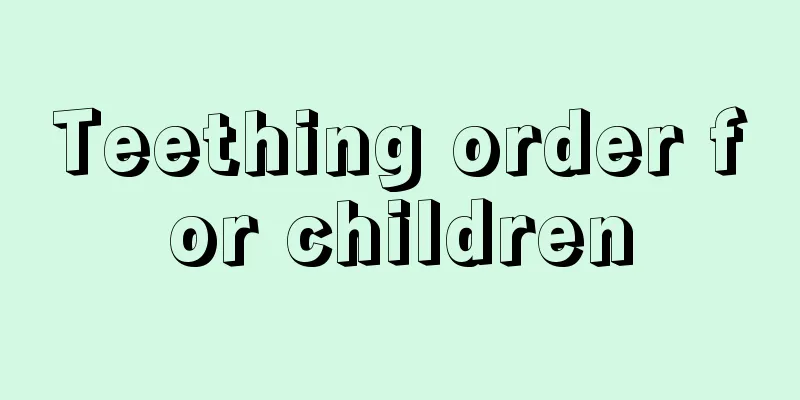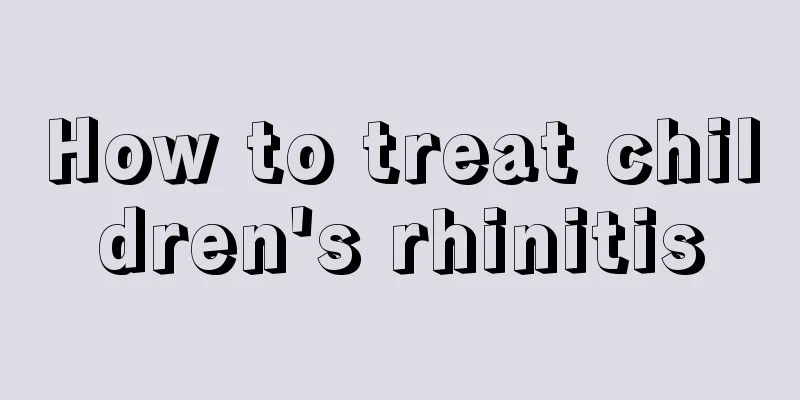Treatment of clubfoot in newborns

|
We may have all seen the situation of inversion of the feet in newborns. If we don’t take care of it in time, the children will walk differently from normal people when they grow up, with a limp. This will cause great trouble to our appearance and even affect our marriage. Of course, many female friends don’t want to find such a man themselves, so this problem must be taken seriously by us. So, what are some good ways to treat the situation of inversion of the feet in newborns? Let us now learn about the treatment of clubfoot in newborns! Treatment: 1. For infants under 1 year old, the mother and an assistant should help perform manual correction while breastfeeding. The infant should flex his knees (to relax the Achilles tendon), and the assistant should fix the child's knee joint. The operator should hold the upper part of the child's ankle joint with one hand and support the plantar surface of the front of the foot with the other hand, and use force to evert, abduct and dorsiflex the affected foot. This should be done twice a day with gentle techniques to avoid bone injuries. Correction should be moderate. After the deformity is corrected, use a soft bandage to wrap from the inner plantar surface to the outer dorsum of the foot to fix the foot in the corrected position. Observe closely and do not tighten it too much to avoid affecting the blood circulation of the foot. If the deformity correction is significantly improved and the elastic resistance of the foot's abduction and dorsiextension disappears, the foot support can be replaced to maintain the corrected position. This method should be continued until the child is one year old. Generally, the effect is satisfactory. If the deformity is not completely corrected, it can also relax the spastic soft tissue, laying a good foundation for further treatment. 2. For children aged 1-3 years, manual correction is performed in stages with plaster fixation. Under general anesthesia, the child lies on his back with his knees flexed 15 degrees, or lies prone with his knees flexed 90 degrees, with an assistant supporting the knee joint and calf. The surgeon supports the heel with one hand to correct the heel inversion and droop, and pushes the front plantar surface of the foot with the other hand to correct the drooping, inversion and adduction deformities at the same time. When the foot is in the corrected position, the knee is flexed 15 degrees from the mid-thigh to the metatarsophalangeal joint and fixed with a plaster cast. For children aged 1-2 years, change the baby's underwear every 2 weeks; for children aged 2-3 years, change the baby's underwear once a month. Pay attention to plaster compression after surgery, the child will cry and be restless. Go to the hospital for examination immediately and have a window opened in the bone protrusion that is easily compressed. The above two methods, for mild inversion and ptosis of the foot, if the operating rules are strictly followed and handled carefully, not only will there be no complications, but the deformity can be corrected in most children. For maintenance therapy, the Denis-Browne lightweight splint can be used. 3. For children aged 3-15 years old who have failed manual treatment or have not been treated, soft tissue release surgery can be used. The operation includes the following steps: (1) Achilles tendon lengthening: Achilles tendon lengthening should be done after the correction of the forefoot internal varus deformity, because the tense Achilles tendon can form a lever arm for correcting the forefoot deformity. Otherwise, the support point of the calcaneal tuberosity will be lost. There are two commonly used lengthening methods: 1) Lengthening under direct vision: external or general anesthesia. Make an arc-shaped incision along the lateral side of the Achilles tendon, from the junction of the tendon and the muscle belly to the calcaneal tubercle. The incision is about 8-18 cm long. Cut the skin, subcutaneous tissue and tendon sheath, and then use a sharp knife to pierce the center of the Achilles tendon perpendicular to the Achilles tendon. Cut the Achilles tendon longitudinally from top to bottom, cut off the medial half at the calcaneal tubercle, and the lateral half at the muscle belly end. After the foot deformity is corrected, make a 2-shaped extension. 2) Subcutaneous Achilles tendon extension: Under general anesthesia, the child lies prone and the operation is performed under sterile conditions. The assistant supports the knee joint with one hand to keep it straight, and holds the front of the foot with the other hand to dorsiflex the foot and tighten the Achilles tendon. The method is as follows: Oblique incision and extension method: Clean the skin at the calcaneal junction and use a crescent-shaped knife to cut the Achilles tendon from bottom to top in a frontal shape, retaining the anterior paratenon membrane, maintaining the blood supply to the Achilles tendon, and extending it by dorsiflexion traction. Straight cutting and lengthening method: Use a sharp knife to vertically pierce the center of the upper and lower ends of the Achilles tendon at the lower end and the belly end of the Achilles tendon, cut off the lateral half of the Achilles tendon at the belly end, cut off the medial half at the tuberosity end, stretch the dorsum of the foot, and extend the Achilles tendon in the sheath to extend the Achilles tendon. (3) Joint capsule incision and ligament severance: To correct calcaneal varus deformity, the deltoid ligament and calcaneotarsal joint capsule need to be severed without suturing. After the calcaneal varus is corrected by manipulation, it relies on fibrous healing. In order to prevent the tendons and blood vessels and nerves of the posterior tibialis, flexor hallucis longus, and flexor hallucis longus from shifting between the talus and calcaneus in the short term after surgery, the deltoid ligament and joint capsule should be incised in different planes. The above content introduces us to how to treat clubfoot in newborns. I believe this is undoubtedly a great blessing for patients with clubfoot in newborns. I believe that we can all cure our own problems as soon as possible. I hope my introduction can be helpful to everyone. |
<<: Treatment of neonatal hemorrhage
>>: Treatment of runny nose and nasal congestion in newborns
Recommend
Can children of short parents grow taller?
Many parents hope that their children's heigh...
Newborn baby has small red spots on face and head
Many parents will find that their babies have sma...
When is the best time for babies to drink juice?
Fruit juice not only tastes delicious, but also h...
Developmental standards for premature infants
In fact, it is even more difficult to feed premat...
What are the reasons for inability to defecate and heavy bleeding?
Constipation has become a common symptom that tro...
Baby's stool routine occult blood positive
The baby's physical health is the topic that ...
What are the precautions for newborns?
When a child is just born, he faces a brand new w...
Causes of precocious puberty in children
Children nowadays are not as innocent as before. ...
What are the precautions for a 2-year-old baby to swim?
The climate is very hot in summer, so swimming be...
What should I do if my three-month-old child has a fever of 38 degrees?
The hardest-working people in the world are paren...
When should children brush their teeth?
Teenagers and children with uneven teeth are ofte...
What foods should babies eat when they have diarrhea?
The people who worry the most when their baby get...
Lazy mothers raise diligent children
Nowadays, parents protect their children too well...
What are the benefits of spinal massage for children?
Pinching the spine for children is a relatively c...
Why do children get tired easily?
Our body needs certain nutrients on a daily basis...









